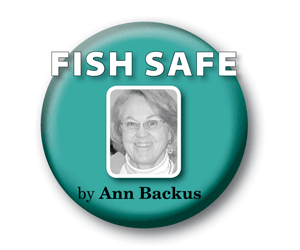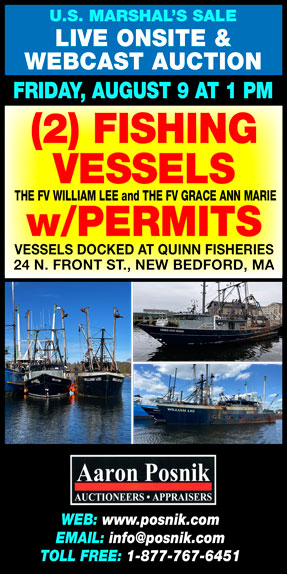In the February 2015 issue of CFN, Fred Mattera wrote a SAFE BOAT-SMART BOAT column on inspection and maintenance.
Here is a follow-up article that reviews some steps for a smooth and safe return to a new season of fishing after being being hauled out over winter, or a simply after a period of vessel inactivity.
Fluids
Assuming that you took your boat out of the water for the winter you undoubtedly paid attention the various fluids.
 If you changed the oil before storage, you avoided having your engine sit idle with contaminants in it from the previous season.
If you changed the oil before storage, you avoided having your engine sit idle with contaminants in it from the previous season.
Nigel Calder (2005) in Boatowner’s mechanical and electrical manual – which was the prime source for this article – recommends that you crank the engine to get the oil pressure up, then while running the engine check for oil leaks.
Similarly, you should have changed the transmission fluid and the anti-freeze in water-cooled engines at the end of the previous season.
Your raw-water system should have come through the cold winter well if it was well-drained, cleaned of debris.
If you left any part of the system open or not completely closed, be sure to re-connect it before heading off.
The fuel tank should be full, but if it wasn’t left full it would be wise to check the system for evidence of condensation such as rust and sediment.
Be sure the fuel filter is clean.
Hoses, clamps and belts
If you still use rubber rather than synthetic hoses, you are probably aware that cold weather, dryness, oil, and fuel are harsh on rubber.
The consequences of rubber failure – whether a hose or a seal – can be very serious.
Fire or flooding are very possible.
I learned about rubber gaskets the hard way when my dishwasher spilled hot water all over my kitchen floor when I ran it after being away for a year. The rubber door seals had dried to a crisp.
A strategic inspection of rubber seals, vibration reducers such as rubber feet, and hoses is extremely important after a cold winter and inactivity.
A visual inspection – just looking for cracks and tears –is essential but not enough.
Run your fingers along the undersides and non-visible portions of hoses to locate cracks, weakness, bulges.
Even a pinhole leak can spray out enough fuel to start a fire.
Loosen clamps slightly, inspect the rubber under and around them, and check the clamps for corrosion and cracks.
Some fishermen double clamp; some replace clamps every year, but in any case stainless steel clamps should used.
Check your hydraulic system for leaks as well.
Replace hoses as needed with hose rated for the intended use – whether fuel hose, water hose, hydraulic system, or exhaust hose.
These days there are many types of synthetic, multi-layer low permeation fuel hoses that meet EPA and US Coast Guard standards and are suitable for today’s fuel blends.
Finally, inspect belts for cracks and weakness and tighten any you loosened to relax the tension on them over the winter.
Electrical system
Go over all components of your electrical system.
Check that batteries are charged and able to take a charge; replace batteries that show corrosion.
Look at wiring and connections; check the function of all lights throughout the boat, as well as engine and high water alarms.
Check radios, on-board navigation equipment, and fog horns.
Steering
Crawl around and check all components of your steering system which includes steering gear, gland packing, bearings, and bearings and bushings on hydraulic rams, as mentioned by Fred Mattera.
Expiration dates
Check expiration dates of your EPIRB, life raft maintenance, and dockside exam decal if you have one.
If you don’t, it might be time to schedule a dockside exam with the Coast Guard.
Take a look in your first aid kit to see if anything needs to be replaced because of expiration or just wear and tear.
And inspect the fire extinguisher or fire suppression system.
Watertight integrity
All systems might be “a go” but if the boat is not watertight, well then, that’s a problem.
Check the hull for cracks and corrosion; check the through-hull fittings, and change the zincs if it is time.
Ann Backus, MS, is the director of outreach for the Harvard School of Public Health’s Department of Environmental Health in Boston, MA. She may be reached by phone at (617) 432-3327 or by e-mail at <abackus@hsph.harvard.edu>.…

Read more of the April issue of Commercial Fisheries News. Buy this issue or Subscribe.
(Read online immediately with access key and download for future reference.)








 Updating...
Updating...